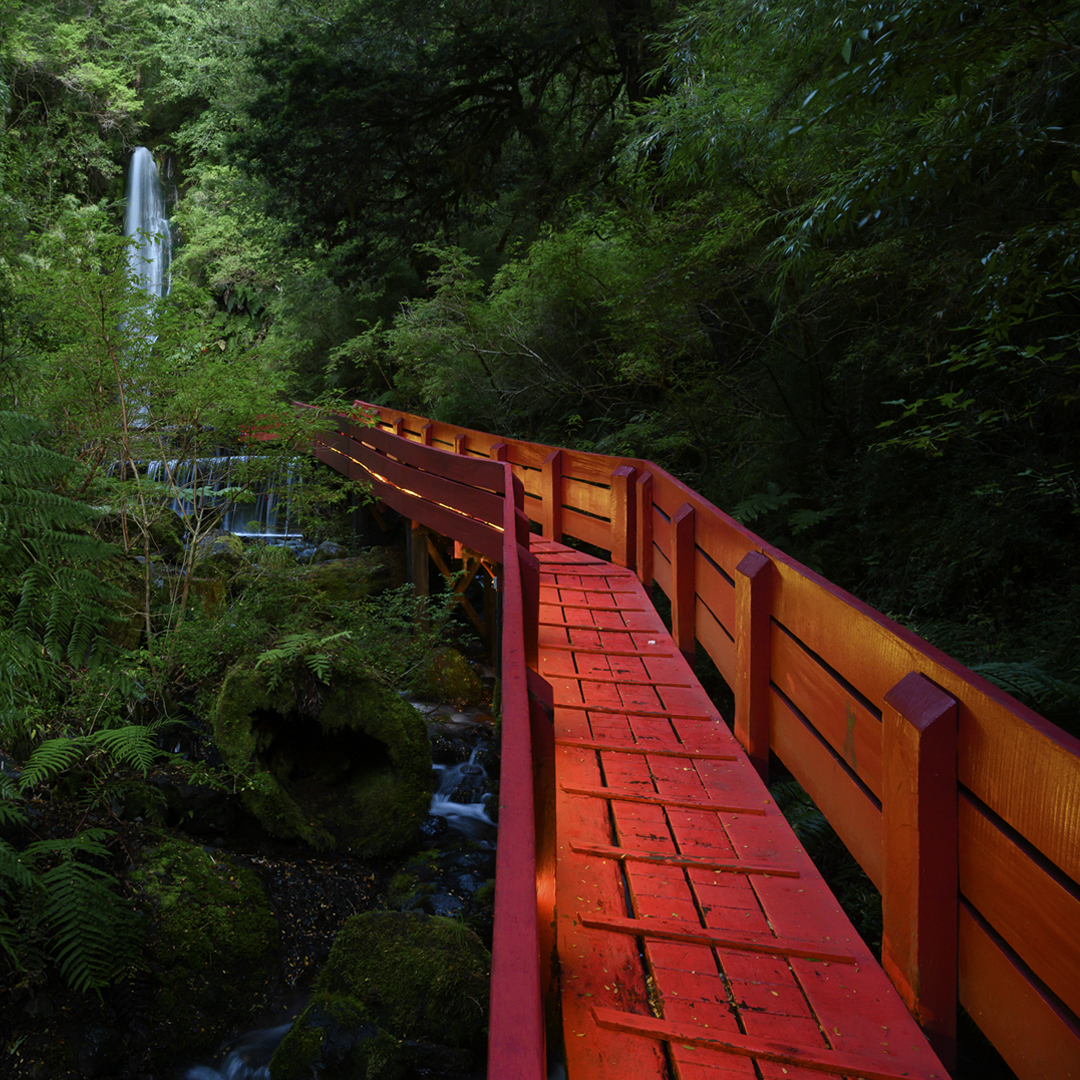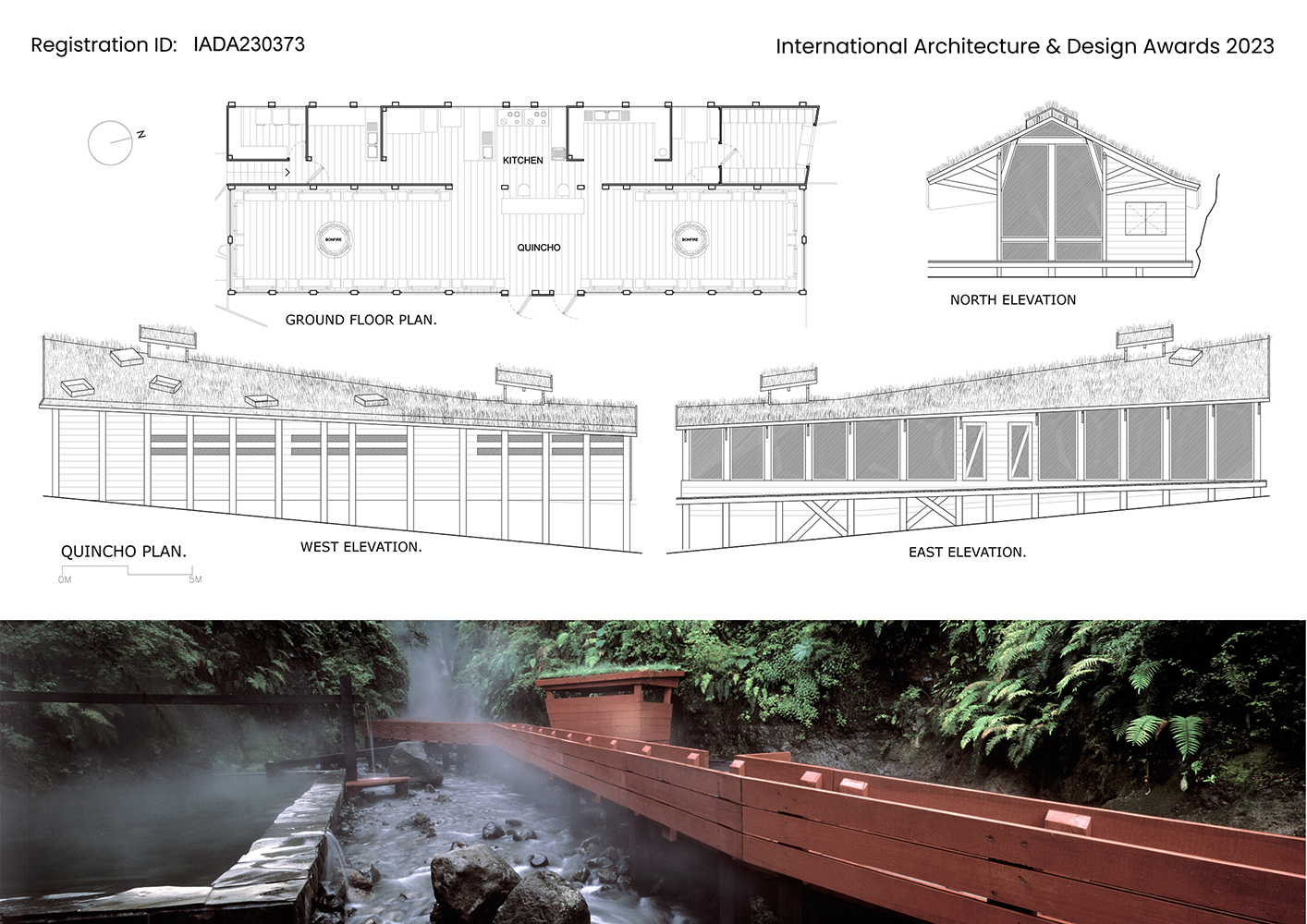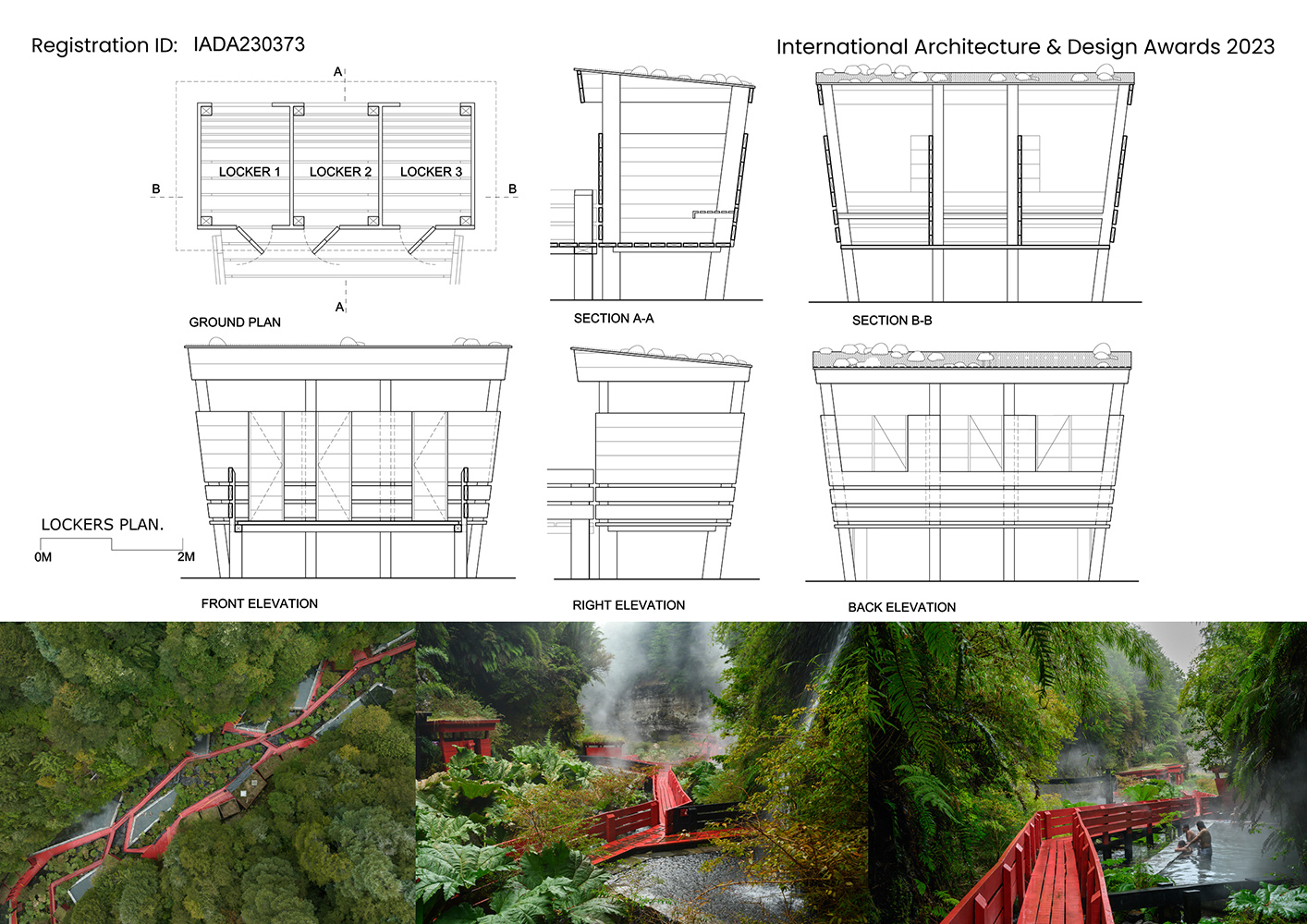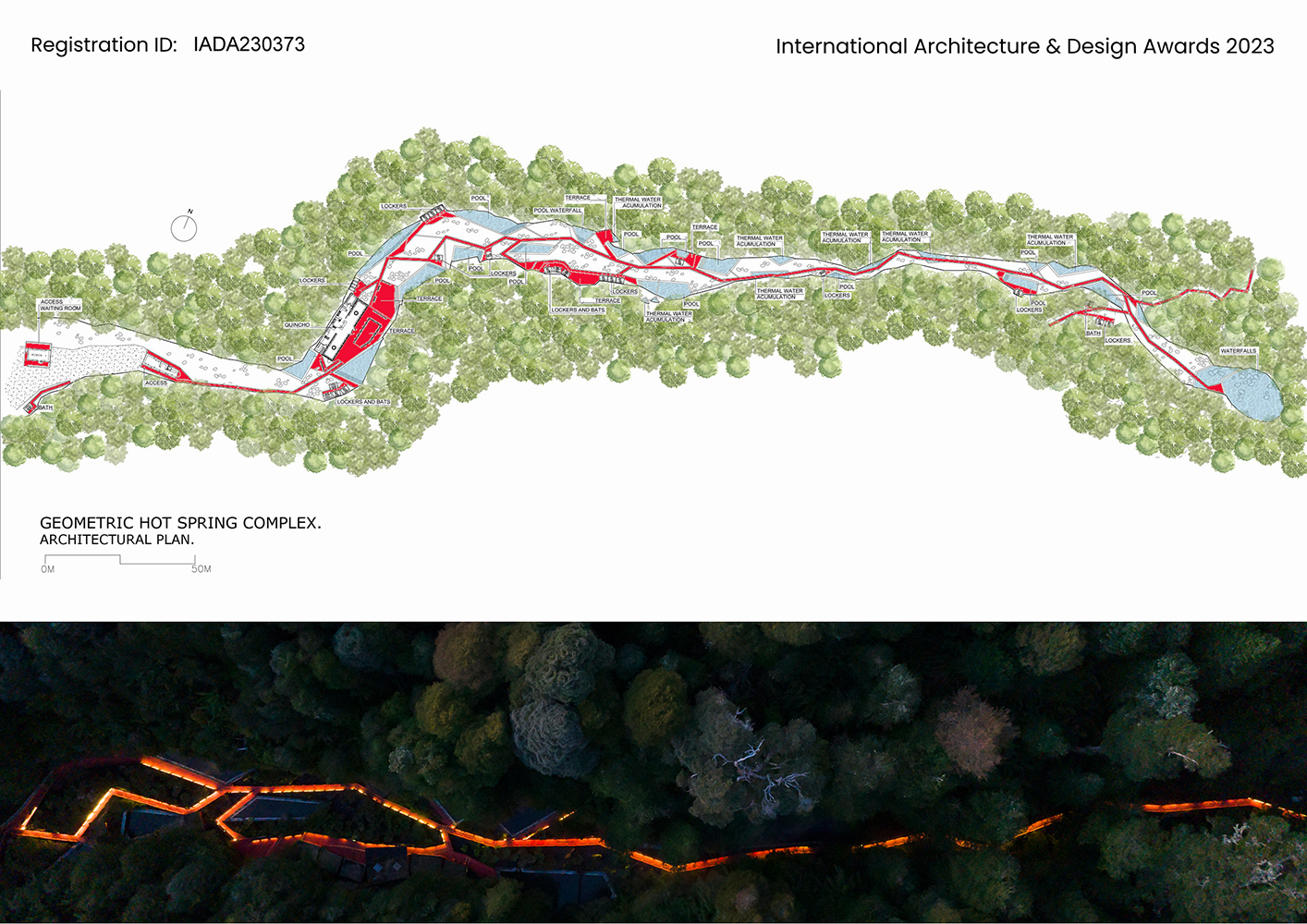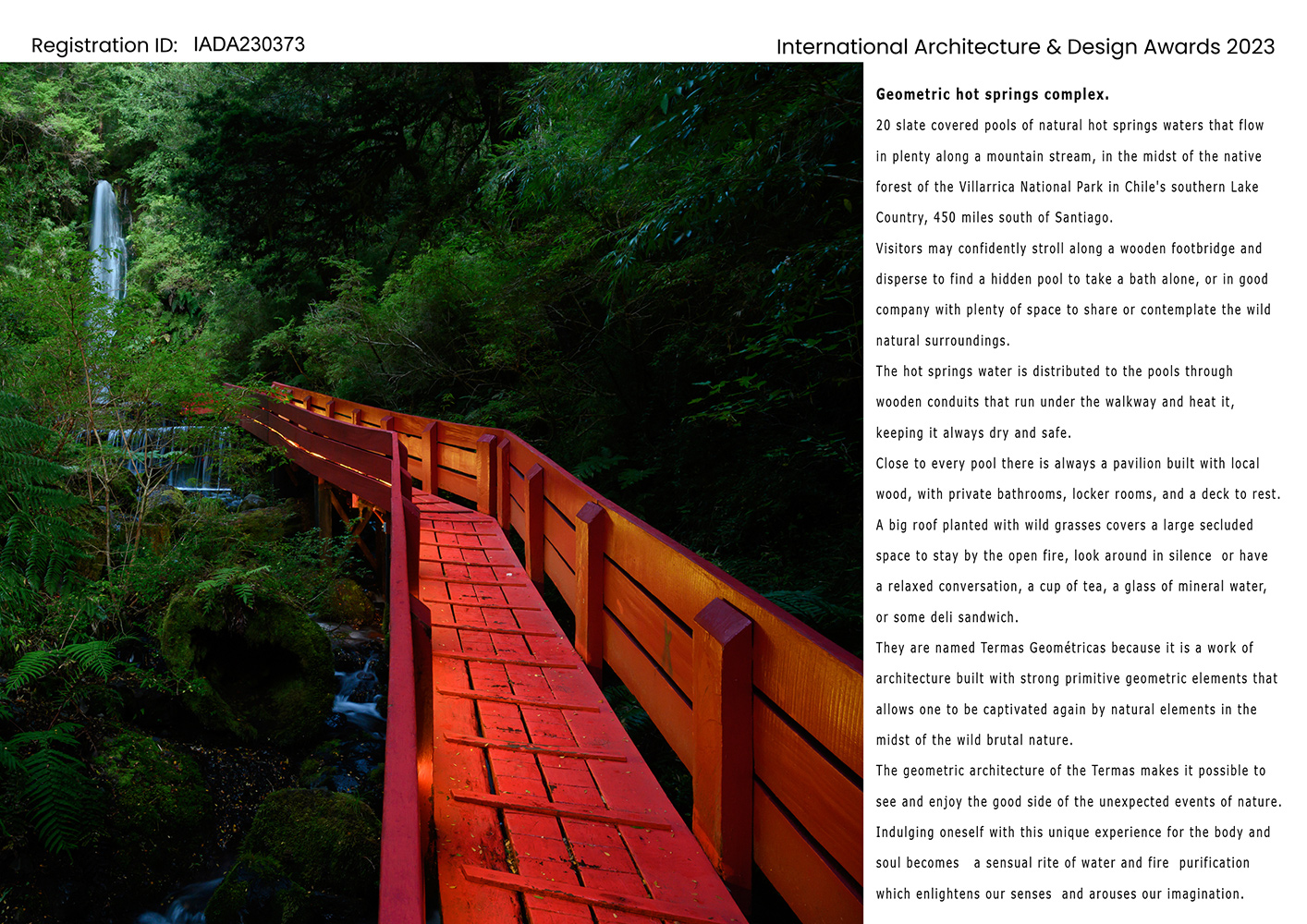Platinum Winner of the International Architecture & Design Awards 2023
Architect / Designer:
Germán del Sol Guzmán.
Studio:
Germán del Sol, Architects.
Design Team:
José Luis Ibañez, Architect.
Carlos Venegas Barría, Architect.
Eliseo Barriga, Job captain.
Copyright:
Guy Wenborne.
Country:
Chile
20 slate covered pools of natural
hot springs waters that flow in plenty
along a mountain stream,
in the midst of the native forest
of the Villarrica National Park
in Chile’s southern Lake Country,
450 miles south of Santiago.
Visitors may confidently stroll
along a wooden footbridge and disperse
to find a hidden pool to take a bath alone,
or in good company with plenty of space
to share or contemplate the wild natural surroundings.
The hot springs water is distributed
to the pools through wooden conduits
that run under the walkway
and heat it, keeping it always dry and safe.
Close to every pool there is always
a pavilion built with local wood,
with private bathrooms,
locker rooms, and a deck to rest.
A big roof planted with wild grasses
covers a large secluded space to stay by the open fire,
look around in silence
or have a relaxed conversation,
a cup of tea, a glass of mineral water,
or some deli sandwich.
Or just enjoy the sunshine in the deck around.
The constant movement of water and fire
that always change, but go nowhere,
appears in all its natural splendour,
seducing everyone into a calm spirit.
They are named Termas Geométricas because
it is a work of architecture
built with strong primitive geometric elements.
That allows one to be captivated again
by natural elements in the midst of the
wild brutal nature.
The geometric architecture of the Termas
makes it possible to see and enjoy
the good side of the unexpected
events of nature.
Indulging oneself with this unique experience
for the body and soul becomes
a sensual rite of water and fire purification
which enlightens our senses
and arouses our imagination.
20 slate covered pools of natural
hot springs waters that flow in plenty
along a mountain stream,
in the midst of the native forest
of the Villarrica National Park
in Chile’s southern Lake Country,
450 miles south of Santiago.
Visitors may confidently stroll
along a wooden footbridge and disperse
to find a hidden pool to take a bath alone,
or in good company with plenty of space
to share or contemplate the wild natural surroundings.
The hot springs water is distributed
to the pools through wooden conduits
that run under the walkway
and heat it, keeping it always dry and safe.
Close to every pool there is always
a pavilion built with local wood,
with private bathrooms,
locker rooms, and a deck to rest.
A big roof planted with wild grasses
covers a large secluded space to stay by the open fire,
look around in silence
or have a relaxed conversation,
a cup of tea, a glass of mineral water,
or some deli sandwich.
Or just enjoy the sunshine in the deck around.
The constant movement of water and fire
that always change, but go nowhere,
appears in all its natural splendour,
seducing everyone into a calm spirit.
They are named Termas Geométricas because
it is a work of architecture
built with strong primitive geometric elements.
That allows one to be captivated again
by natural elements in the midst of the
wild brutal nature.
The geometric architecture of the Termas
makes it possible to see and enjoy
the good side of the unexpected
events of nature.
Indulging oneself with this unique experience
for the body and soul becomes
a sensual rite of water and fire purification
which enlightens our senses
and arouses our imagination.
Germán del Sol, Architects.
Saturated color
because our world
is not white,
and white reflects a
purity that is alien to us
and seems dead to us.
Thick and imprecise line
to be firm,
but subtly insecure,
accepting the error,
affirming and doubting
the certainties
that architecture provides
to human life.
Deep and true search
for a relationship
with the native cultures
of all Latin America
without being folkloric.
The movement must
be contained
in the experience
of the work in a place,
the turns are necessary
to respond to life as it is,
there is no sculpture,
no decorative artifice.


